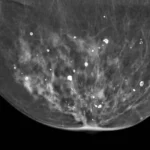Both patients and healthcare providers should pay close attention to this area, as it often goes unnoticed in self-examinations. This guide covers the anatomy, function, and importance of the Tail of Spence for proactive breast care and accurate medical assessment.
Introduction to Tail of Spence Breast:
When it comes to understanding breast anatomy, many people are familiar with the main breast tissue on the chest, but fewer know about the Tail of Spence. This structure extends into the armpit and is clinically significant because it is a common area where breast changes, such as lumps or cancer, can appear.
As someone with years of experience in health education and clinical awareness, I can tell you that learning about the Tail of Spence in the breast is not just medical jargon – it’s practical knowledge. Whether you’re a student, a healthcare professional, or simply someone curious about their own health, understanding this extension of breast tissue is important for both early detection of disease and for accurate clinical examinations.
Because many breast cancers develop in this region, making it a key area for breast exams.
What is the Tail of Spence:
The Tail of Spence, also known as the axillary tail of the breast, is a natural extension of breast tissue that reaches into the axilla (armpit). It’s named after James Spence, the Scottish surgeon who described it. Structurally, it is not separate from the breast but rather a continuation of the glandular tissue.
This area is clinically important because breast cancer and other abnormalities can occur here. In fact, many clinicians pay special attention to the upper outer quadrant of the breast and the tail of Spence during breast examinations since this is a common site for breast tumors to develop.

Anatomical Location of the Tail of Spence:
The tail of Spence starts from the upper outer quadrant of the breast and extends diagonally toward the axilla. If you imagine the breast divided into four quadrants, the upper outer part, closest to the armpit, is where this extension is located.
Because the tail blends into axillary tissue, it can sometimes be difficult to distinguish from nearby lymph nodes or fatty tissue. That’s why experienced clinicians always palpate (examine by touch) this area during physical exams to detect any irregularities.
Function and Clinical Significance:
Although the Tail of Spence doesn’t have a separate function apart from the breast, it is important clinically. The extension of glandular tissue can be involved in many conditions. Healthcare providers emphasize this area because patients often overlook armpit changes when self-examining, yet early detection here can be life-saving.
- Breast cancer: Many breast cancers originate in the upper outer quadrant, making the Tail of Spence a critical focus in screening.
- Fibrocystic changes: Benign lumps or cysts can also be felt in this region.
- Accessory breast tissue: Sometimes, additional breast tissue or even a small nipple may develop along the milk line, including the axilla.
Tail of Spence in Breast Examination:
During a clinical breast exam, doctors and nurses carefully check the Tail of Spence. By paying attention to the Tail of Spence, abnormalities can be caught earlier. This is why medical training emphasizes not just the visible breast tissue but also its axillary extension.
- Palpation of the axilla – feeling for lumps, thickening, or tenderness.
- Assessment of lymph nodes – since axillary nodes drain breast tissue, abnormalities here may suggest underlying disease.
- Patient self-exams – women and men are encouraged to include the upper outer breast and armpit in monthly self-exams.
Common Misconceptions about the Tail of Spence:
Many people assume that breast tissue ends at the chest, but the Tail of Spence proves otherwise. Another misconception is that lumps in the armpit are always lymph nodes – they can actually be breast tissue changes.
Understanding this extension helps both patients and professionals recognize the true anatomical spread of the breast and avoid missing early warning signs.
FAQ
Most frequent questions and answers
The Tail of Spence is in the upper outer part of the breast and extends into the armpit (axilla).
Because many breast cancers develop in this region, making it a key area for breast exams.
Yes, since men also have breast tissue, the Tail of Spence exists in both genders, though less pronounced.
Conclusion:
Understanding the Tail of Spence breast anatomy is essential for both medical professionals and individuals who want to stay proactive about their health. Since this axillary extension is a common site for breast cancer and other changes, awareness can truly make a difference in early detection. By including the upper outer quadrant and armpit in regular self-checks and clinical exams, one can significantly improve the chances of spotting abnormalities early and protecting long-term breast health.








